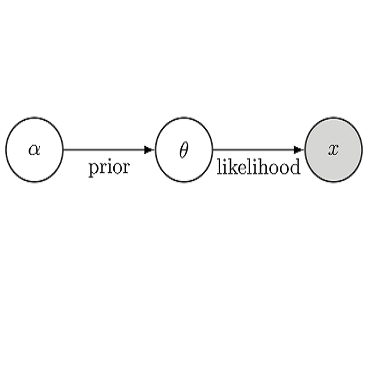Estimation of link travel time correlation of a bus route is essential to many bus operation applications, such as timetable scheduling, travel time forecasting and transit service assessment/improvement. Most previous studies rely on either independent assumptions or simplified local spatial correlation structures. In the real world, however, link travel time on a bus route could exhibit complex correlation structures, such as long-range correlations, negative correlations, and time-varying correlations. Therefore, before introducing strong assumptions, it is essential to empirically quantify and examine the correlation structure of link travel time from real-world bus operation data. To this end, this paper develops a Bayesian Gaussian model to estimate the link travel time correlation matrix of a bus route using smart-card-like data. Our method overcomes the small-sample-size problem in correlation matrix estimation by borrowing/integrating those incomplete observations (i.e., with missing/ragged values and overlapped link segments) from other bus routes. Next, we propose an efficient Gibbs sampling framework to marginalize over the missing and ragged values and obtain the posterior distribution of the correlation matrix. Three numerical experiments are conducted to evaluate model performance. We first conduct a synthetic experiment and our results show that the proposed method produces an accurate estimation for travel time correlations with credible intervals. Next, we perform experiments on a real-world bus route with smart card data; our results show that both local and long-range correlations exist on this bus route. Finally, we demonstrate an application of using the estimated covariance matrix to make probabilistic forecasting of link and trip travel time.
翻译:估计公共汽车路线的连接旅行时间相关性对于许多公共汽车业务应用程序至关重要,例如时间表安排、旅行时间预测和过境服务评估/改进等,此前的研究大多依靠独立假设或简化当地空间相关结构。然而,在现实世界中,公共汽车路线上的连接旅行时间可能显示复杂的关联结构,例如长距离关联、负相关和时间变化相关。因此,在引入强有力的假设之前,必须从经验上量化和审查从真实世界公共汽车业务数据中连接旅行时间的关联结构。为此,本文开发了拜斯登高斯模型,用以估计使用智能卡类数据的公共汽车路线的连接旅行时间关系矩阵。在使用这些不完全的观察(即缺少/粘塞值和重叠连接段)来克服相关的矩阵估计中的小抽样问题。因此,在引入强有力的假设之前,我们建议一个高效的Gib抽样框架,将缺失和破碎的公共汽车业务运行数据流数据流数据流数据流数据流的连接度与相关行距矩阵的远端分配。我们用三个数字实验方法,通过借用这些不完全的模型来进行真实的模型评估。


